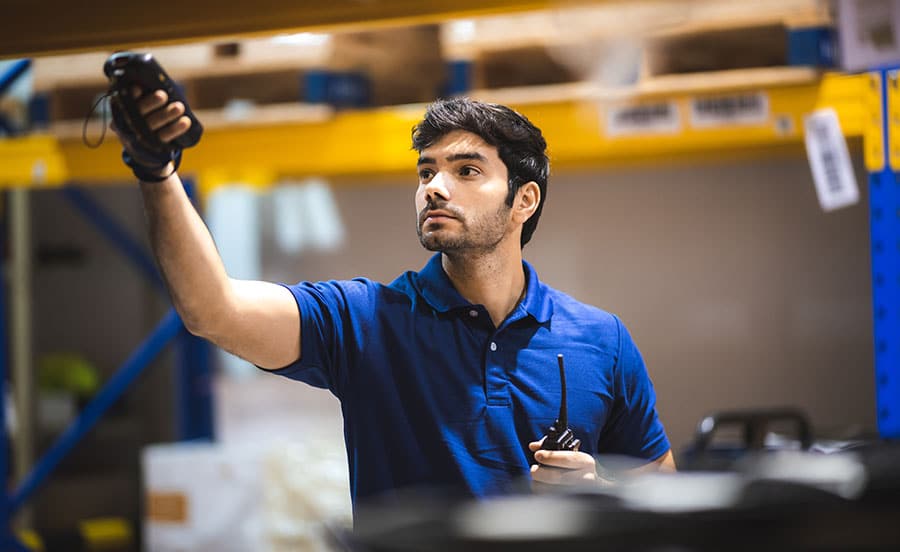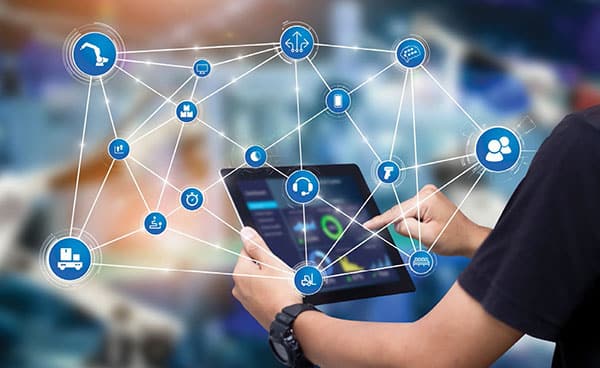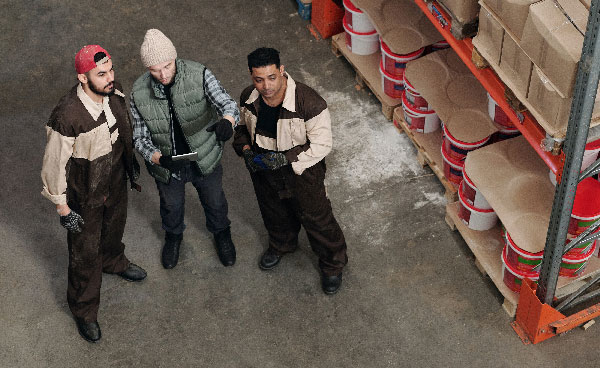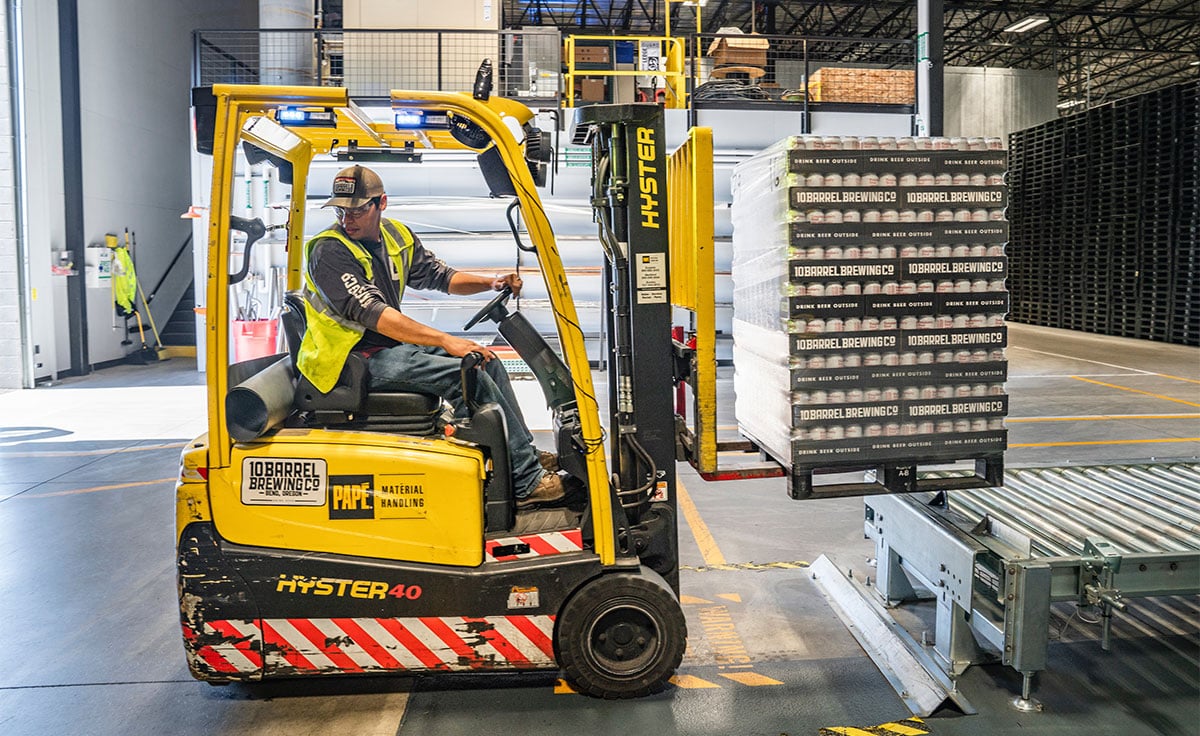In the first part of our article, we discussed how the future of warehouse work will entail a shift away from pay as the main attraction point for workers, to an environment that will require moving towards empathy and giving workers more of a stake in how the operation is run. That includes the areas of automation and technology. One question that operators should ask when it comes to technology is, to what extent can you individualize the processes, workflows, and systems that take place within a facility, in line with different levels of expertise and talents of the various workers, as opposed to just standardizing everything, which would seem like the easiest way to go?

Intuitive Technology and User-Defined Experience
In warehouse work, we often deal with a more variable workforce, using a higher number of temp users. There is going to be higher turnover generally due to the nature of the work. New tech and training should account for those new employees, the temporary workers and the seasonal employees, when they ramp up, along with the veterans who are there day in and day out, and may have been there 10-20 years. At Lucas, we aim to develop scalable solutions. For example, a workflow on an RF gun, or voice-based device, that has different steps for an experienced person versus the new one. Another example, if you have auditing steps in a process, or a QC check, adjusting the percentage of that audit up or down based on the user’s experience, or volume during a day. Or ask yourself, ”Are there extra verifications that can be added along the way?”
What you’re ultimately trying to design is a scalable solution, one that works just as well for the new user off the street, as it does for the expert. For example, in a voice-based system, having adaptive dialogues or speeding the audio up or down can help really dial in the right experience from a user perspective. At its core, all user experience is built from empathy, and putting yourself in someone else’s shoes.
Retaining Talent and Redefining the Worker Experience
Worker retention is a huge issue in logistics and distribution centers these days, especially with younger generations of workers who do not spend as much time in a single job or are more likely to move from job to job more frequently than older workers. Everything we’ve covered should lead to retaining workers because you are creating a more satisfying job environment. But is the nature of a DC such that there are indeed opportunities for advancement to create more interesting jobs, and how realistic is that possibility for a worker in these spaces?
The answer here is absolutely yes. We covered earlier the idea of trying to automate the simple stuff, and as you do that, you generally will need less people doing the simple stuff. So you can move workers to the more complex problems and value added services, maybe things like embroideries, labeling, and receipt processes. You can move people up through those things that are more creative, that require problem solving, including inventory and quality control, which require some higher level analysis and thought. One great example involves a customer of ours that develops and opens new DCs throughout the United States. They have a select squad of pickers they will rotate around the country to new DCs or those that are struggling to find talent, to help get them up and running. That gives the workers the chance to travel, which isn’t typical of traditional warehouse work. But more importantly, it helps them share knowledge, train, and “own” some processes for other DCs. They are routinely moving 10-30 workers at a time to different DCs that are selected from a pool, so it’s not just one training group. That really helps share the knowledge and democratize some of the learning across a DC network.
The public image of a warehouse today, especially if it’s million square feet or more, is of an environment where workers are monitored every single second they’re in the facility. They are judged on how long tasks take, how long their breaks are, etc. How do you achieve the level of empathy and engagement we’re talking about in an environment like that? How do you balance it with this necessity to measure worker productivity so the worker doesn’t feel that someone is literally looking over their shoulder every?
It’s certainly a tricky balance, but it comes from culture more than anything. We’ve found that if you engage workers in what metrics they will be judged and assessed on, you have a much higher success rate than if you push some metric down from on high that they had no input on. Coming back to the design sessions on software, you apply the same engagement principle. You ask, as a team, what metrics we should be assessed on and try to get some buy-in. Then as you want to improve, you can nudge those up, hopefully with the approval and feedback of the leaders around the warehouse. But again, you want to engage them in that process as early as possible. Another way we have found that has improved worker productivity without being so “big brother” is through things like incentive pay and contests, and other ways that you can incentivize workers to move faster, pick faster, or be more efficient. You have to give them the tools, and leadership has to have the tools to assess that properly. It is a tricky balance.
Will this Require a New Way of Thinking?
Just the word empathy likely causes some old-line traditional warehouse managers to roll their eyes and say, “This is a facility where things have to get done. We don’t have time for empathy.” In some cases, this may require a new skill set at the executive level – an awareness of the need for empathy in an environment where that hasn’t necessarily been present. But honestly, we have seen many DC managers and supervisors who started in the trenches, and worked their way up. So they understand it. They get it. And in situations where the trucks are late, or there’s a significant order volume, and staffing is limited, managers, DC supervisors, leaders, and HR people, will come out to the floor and help get the work done. You must operationalize the feeling that we are all on the same team. What’s good for the worker is good for the organization. Many people have played some team sport and have been a part of a team before. Environments that feel like that typically thrive more than the place where the boss never leaves his office, sits at the computer and sends angry emails. It does come from leadership, and it does require a particular set of skills.
So the idea of technology must be balanced by humanity. Automation of systems can certainly be a big benefit for companies. Still, at the same time, this idea of how it can lead to better empathy in the workplace and drive better engagement and productivity is the key. You must integrate both to be truly successful and sustainable.
Rather than thinking of people as mercenaries who will walk across the street for an extra dollar, give them the tools and the technology to be more efficient. If they’re not checking off paper pick lists or are clicking through 12 screens to complete a single task, and their day improves, they’re probably going to be more willing to stay and work for your company. Utilized correctly, technology can create an atmosphere of empathy in a DC environment, augmenting and enhancing the workers’ experience there.
Hear Kyle’s thoughts brought to life in this podcast with Supply Chain Brain’s Bob Bowman.

About Kyle Franklin
Kyle Franklin is a Solution Consultant with Lucas Systems, leading numerous solution designs and implementations in the U.S., EMEA and Asia Pacific Regions and helping to transform and optimize distribution center operations worldwide. Prior to Lucas, Kyle held roles in international logistics and warehousing for global logistics providers. Kyle has an MBA with a focus in Operations and Strategy from the Katz Graduate School of Business at the University of Pittsburgh and a B.S. in Economics from the University of Illinois at Chicago.
About Lucas Systems, Inc.
Lucas Systems helps companies transform their distribution center operations and continuously adapt to changing market dynamics. We dramatically increase worker productivity, operational agility, and customer satisfaction.
Our solutions are built on 25+ plus years of deep process expertise and smart software using AI and voice technologies. Our solutions feature Jennifer™, the brain, voice, and orchestration engine that drives performance improvement gains. Make the smartest moves at the lowest cost with Jennifer™. For more information, visit www.lucasware.com.





